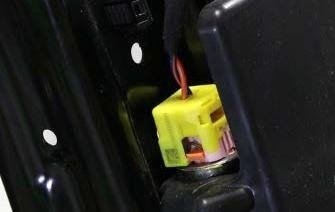Case Studies
Case Study – Seat Harness Electrical Connector Inspection
Our Client
Our client, a Fortune 500 company manufactures vehicle seats for automotive OEMs around the world. A typical vehicle seat has 20+ features, including multiple electrical connector quality control connectors for seat motors, the ECUs, air bag, various other sensors, and the safety belt warning system. All these electrical connectors and sensors are installed onto the vehicle seating harness before the final seat is upholstered and installed into a vehicle.

The Challenge
In our client’s plant, over 2,000 seats are produced daily, and these connectors are manually checked by the line operator. The manual inspection process was prone to human error, an issue which was highly apparent when operators failed to notice a red rabbit that was added to the production line. This routine red rabbit test, designed to audit production quality and enhance quality assurance, highlighted the need for an automated inspection solution that could identify potential defects in this complex component. In addition, the plant had received numerous warranty claims related to unseated connectors, which is caused by human and mechanical errors. When connectors are improperly installed or incorrectly seated, they can become disconnected. Since many of these are fitted inside
upholstered seats, any issues can compromise occupant safety and result in an expensive recall, as repairs sometimes require a complete seat replacement. The company needed to build up a more sophisticated, consistent, and effective solution to enhance customer satisfaction and reduce the cost of warranty claims.
The Solution
To improve the speed and accuracy of the electrical connector quality control process, Unblink3D software solution combined with four 3D structured light cameras were mounted to 4 collaborative Fanuc robots. Due to the highly intensive manual craftsmanship involved in seat manufacturing, the robots work alongside a human operator. Unblink3D industrial engine and communications software, comXtream, was deployed to manage communication between the different devices.

cameras to capture a point cloud image. The cameras are now capable of detecting different types of defects, such as soft set connectors that can come apart with road vibrations or open and missing clips. In tandem, our 3D processing software, ScanXtream analyzed the 3D point cloud of the clips and connectors to check for various types of defects. To verify correct installation and clip engagement, Unblink3D 3D vision algorithm compared the 3D point cloud data to the correct predefined reference position.
Unblink3D real-time manufacturing data intelligence software, SPCWorks then collects, analyzes, and displays the results for the end user. The results of the inspection are displayed graphically to help quality assurance personnel identify issues immediately and rework defective components.

The Results
Following the implementation of Unblink3D software-controlled system, our client achieved 100% inline inspection of all seating without slowing down the rate of production. Any out-of-tolerance or incorrect installations are now highlighted immediately, so they can be rectified.
Using SPCWorks, our client gained a better understanding of the real-time production trends, quality variances, and overall stability of the plant to further improve product quality.

